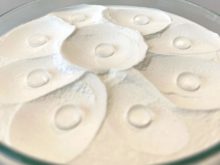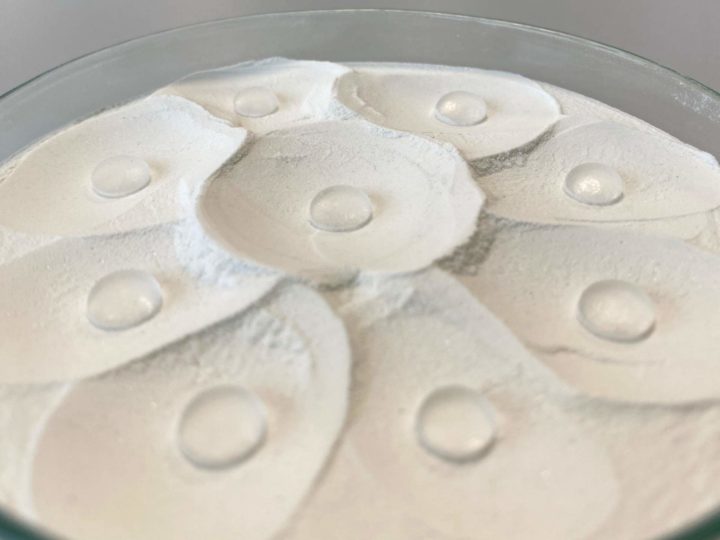Extinguishing powder: the moisture content
Among the different technical features set by EN 615:2009 Standard, let’s focus on the moisture content.
The EN 615:2009 Standard allows, for example, manufacturers to independently determine some physical characteristics of the powder such as particle size distribution or bulk density (for more information about the TDS). In other words, the reference standard only states the tolerance from the characteristic value and not the fixed value.
The tolerances, however, are not granted for the moisture content. Let’s see more.
The moisture content of the extinguishing powder
The moisture content is fixed, and it must not exceed 0.25% by weigh: this is to ensure the highest extinguishing efficiency.
A wet chemical powder can also be recognized at first glance: try to think of lumps (also called caking problem) caused by the presence of water retained. Otherwise, a wet powder is recognizable also by streaks of different colors. (It should be remembered that the caking problem can also occur because of chemical reactions).
Also the powders that apparently do not show any discrepancies may show a value above the fixed one: this situation runs the huge risk of not being efficient during the extinguishing of flames.
For this reason, we carefully control the moisture content, through the method set by the EN 615 Standard, to ensure a 100% high performing product.
Moisture content and water repellency
The moisture content is not trivial, especially in the production of ABC extinguishing powders, which are mixtures of monoammonium phosphate and ammonium sulphate: substances also used to produce fertilizers and therefore with a high water-solubility.
On the contrary, the extinguishing powder must guarantee absolute water repellency, a characteristic made possible adding hydrophobic additives during the production. Similarly, the production of BC dry powder (based on sodium bicarbonate or potassium sulphate) needs a small percentage of additives to ensure the water repellency characteristic.
Moisture content and recovery of exhausted powder
As we said, the EN 615 Standard fixes the maximum value of moisture content at 0.25% m/m: but can the same rules by applied to the exhausted powder with recovery purposes?
Also in this case, the moisture content is extremely important.
Therefore, before proceeding to the recovery process, moisture content should be checked according to EN 615:2009 Standard methodologies, by using a sulfuric acid dryer.
If the value exceeds the fixed percentage, the powder can not be part of the recovery process and it will be destined for disposal.

